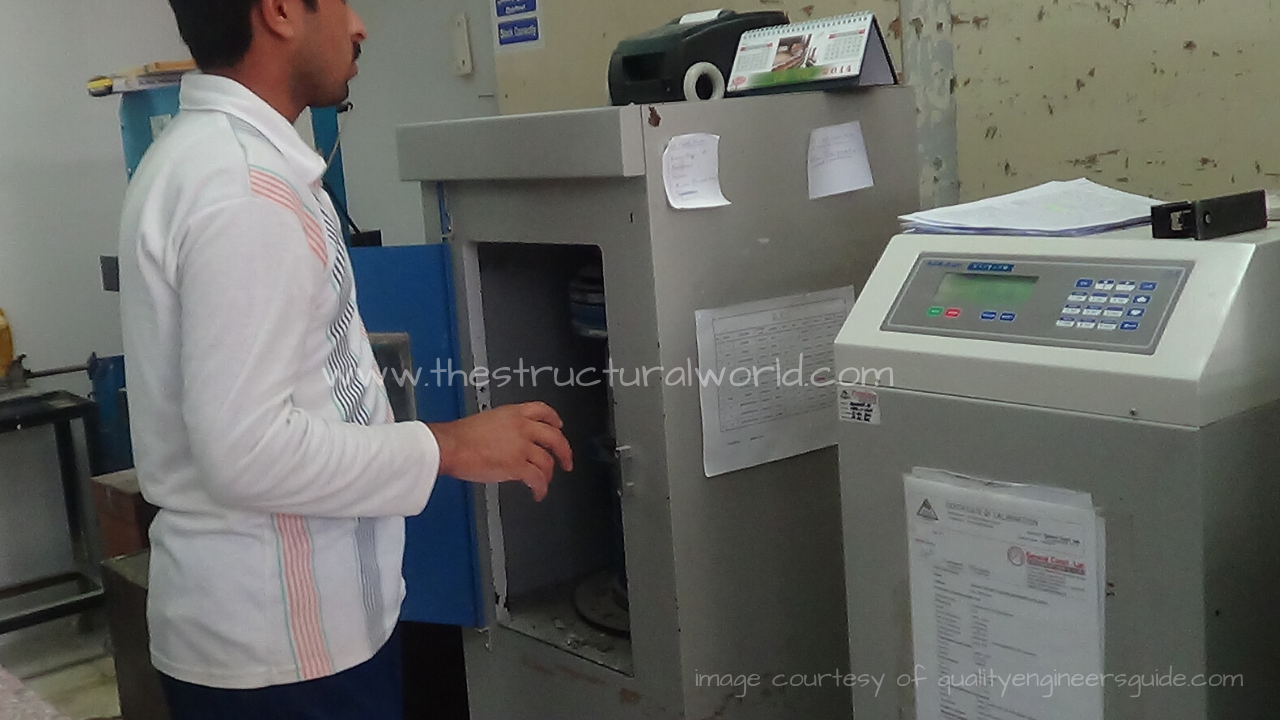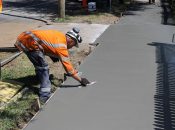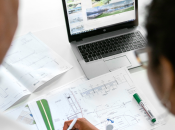
Ever heard about concrete coring on structural members during and after the construction? The laboratory testing on the compressive strength of concrete may call by the consultant if he/she suspects that the newly built structural members are having a low-quality concrete mix. The testing of the compressive strength of concrete is applicable during the assessment of the existing or ongoing building by collecting concrete samples/specimens through concrete coring. These concrete specimens are obtained when there is doubt about the in-place concrete quality due to low strength test results during construction or if there is significant evidence that the structure might not be structurally sound.
Applicable also to molded concrete cylinders and cubes, the test method was performed by applying a compressive axial load at a rate within a prescribed range until failure occurs. The compressive strength of the specimen is calculated by dividing the maximum load attained during the test by the cross-sectional area of the specimen. The results of this test are used as a basis for quality control of concrete proportioning, mixing and placing operations and to determine whether it complies with the design specifications.
These concrete specimens are required in order to verify through laboratory testing if the compressive strength of the existing concrete that we poured at the site reaches the ultimate compressive strength at 28 days. The compressive strength results taken from the concrete coring are then be measured and calculated depending on the stress registered on the compression testing machine. The reading should be multiplied by a certain correction factor. But how exactly the conversion is being done?

An Engineer Performing Concrete Compression Tests
1. How to Calculate the Equivalent Compressive Strength?
According to ACI 318M-14, and ASTM C42, to calculate the equivalent cylinder compressive strength for a “normalized sample, we need to multiply the test results by a correction factor according to the table below. The ASTM C42 section 7.7 states that, If the ratio of length to diameter (L/D) of the specimen is 1.75 or less, correct the result by multiplying by the appropriate correction factors as shown in the table below. Interpolation can be used if the values are not given.
Ratio of Length to Diameter (L/D) 1.75 1.50 1.25 1.00
Strength Correction Factor 0.98 0.96 0.93 0.8
Example:
For a clearer picture, let us take a look at table 1.1 below showing the actual compressive test results concrete coring taken from our previous project during the concrete coring in columns.
| Specimens | 1 | 2 | 3 | 4 | 5 | 6 | 7 | 8 | 9 |
| Test Locations | Podium | Podium | Podium | 1st Flr. | 1st Flr. | 1st Flr. | 2nd Flr. | 3rd Flr. | 4thFlr. |
| Measured fc’ (MPa) | 50 | 51.3 | 44.6 | 46.9 | 52.6 | 39.6 | 58.8 | 49 | 65.6 |
| L/D | 1 | 1 | 1 | 1 | 1 | 1 | 1 | 1 | 1 |
| Correction Factor | 0.87 | 0.87 | 0.87 | 0.87 | 0.87 | 0.87 | 0.87 | 0.87 | 0.87 |
| Corrected fc’ (MPa) | 43.5 | 44.6 | 38.8 | 40.8 | 45.8 | 34.5 | 51.2 | 42.6 | 57.1 |
Table 1.1 Example Core Tests Results
Notice that a series of coring samples are obtained as per table 1.1. According to ACI 318, as stated in ACI 214-4R-03 Chapter 7, the suspected concrete is considered adequate if the average corrected strength of the three cores exceeds 0.85fc’ and no individual strength is lesser than 0.75fc’. Therefore to calculate the compressive strength fc’ for a certain floor should be calculated using the formula:
fc’avg/0.85 and fc’min/0.75
Using the formula above, the following are the tabulated results of compressive strength fc’:
|
Floor Level |
fc’avg /0.85 |
fc’min/0.75 |
fc’ to consider |
|
Podium |
50 |
52 |
50 |
|
1st Floor |
47.5 |
46 |
46 |
|
2nd Floor |
60 |
68 |
60 |
|
3rd Floor |
50 |
57 |
50 |
|
4th Floor |
67 |
76 |
67 |
Table 1.2 (all units are in Mpa)
2. Compressive Strength Classes
Where concrete is classified according to compressive strength, Table 7 of BS EN 206 should be used. The characteristic compressive strength at 28 days of 150mm diameter by 300mm cylinders or that of 150mm cubes may be used as classification.
To convert the compressive strength fc’ into fcu value, refer to Table 7 of BS EN 206 as tabulated below.
|
Compressive Strength Class |
Minimum Characteristics cylinder strength fck,cyl (N/mm2) |
Minimum Characteristics cube strength fck,cube (N/mm2) |
|
C8/10 C12/15 C16/20 C20/25 C25/30 C30/37 C35/45 C40/50 C45/55 C50/60 C55/67 C60/75 C70/85 C80/95 C90/105 C100/115 |
8 12 16 20 25 30 35 40 45 50 55 60 70 80 90 100 |
10 15 20 25 30 37 45 50 55 60 67 75 85 95 105 115 |
Table 2.1: Table 7 of BS EN 206
Note that the fcu and fc’ are both concrete characteristics pertaining to the compressive strength of concrete. The difference is that the first uses a cube sample while the latter uses a cylindrical samples/specimen of concrete during testing. The cube compressive strength, fcu is denoted when you are considering a British or Euro Standards while the cylindrical compressive strength fc’ is denoted when American Standard is used.
Considering table 2.1, below are the summary of the results of concrete core compressive strength:
|
Floor Level |
fc’ |
fcu |
fc/fcu |
Concrete Class |
|
Podium |
50 |
60 |
0.83 |
C50/60 |
|
1st Floor |
46 |
55 |
0.84 |
C45/55 |
|
2nd Floor |
60 |
75 |
0.80 |
C60/75 |
|
3rd Floor |
50 |
60 |
0.83 |
C50/60 |
|
4th Floor |
67 |
85 |
0.79 |
C70/85 |
What do you think about this article? We love to hear your thoughts! Leave a message in a comment form below. You can also follow, like and subscribe to our social media pages below to be updated with the latest posts.
[DISPLAY_ACURAX_ICONS]
References: ASTM C39-3.9M-99A, ASTM C42-42M-99, ACI 318, ACI 214-4R-03, BS EN 206-1









